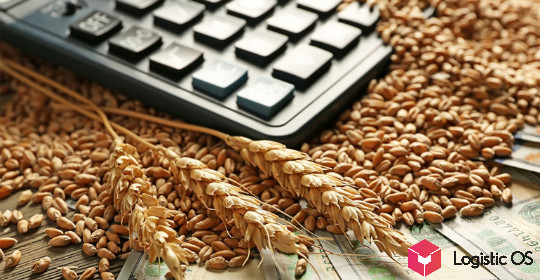A draft government decree on the introduction of restrictions on the export of grain has been published.
As expected, by the end of the grain harvest, the Ministry presented its vision for ensuring the country’s food security, proposing a procedure for determining and assigning quotas.
For the first time, restrictions on the export of wheat, corn, rye and barley were introduced this spring: from April 1 to June 30, a quota of 7 million tons was set.
Already on April 26, it was completely selected, and customs stopped issuing declarations.
This situation suggested that some participants manipulated the established quota using the mechanism of incomplete customs regulation.
Given the inaccuracies of the previous limitation, the government proposed the following quota procedure in 2021:
-
— initially, the formula takes into account the actual volume of grain exported by the exporter from July 1 to December 31, 2020.
— then this figure is divided by the volume shipped by all applicants for an export permit.
— the result is multiplied by the quota.
Thus, the more the exporter exported in the first half of the season, the larger the quota he will receive in the second.
The government expects to set export restrictions at 15 million tons, and they will be in effect from February 15 to June 30, 2021.
As such, the volume being set will not have any significant market impact.
Let’s look at the numbers:
From July 1, 2020 to November 8, 2020, Russia exported 20.2 million tons of grain.
In total, in the first half of 2020/2021 agricultural year, it is planned to export 29.7 million tons of wheat, barley, corn and rye.
At the same time, carryover stocks as of July 1, 2021 must be at least 17.2 million tonnes.
It is assumed that 115.8 million tons of grain will be produced this season, and exports should not exceed 49.5 million tons.
From January 1 to February 14, 2021, it is planned to send 4.8 million tons abroad, including shipments to the EAEU countries in the amount of 217.6 thousand tons.
As a result of the calculations, it becomes clear that the size of the established quota and the estimated volume of exports in the second half of the year are practically equal.
Thus, despite the introduction of restrictions, Russia will be able to fully realize its export potential.

But, no matter how good everything looks in numbers, analysts have some comments:
-
1. The historical principle of distribution is good. This will allow companies to show the highest activity in the export market in the first half of the year.
But initially it was assumed that there would be some free space for new members.
The published proposal does not talk about free space.
Thus, the companies that planned to increase exports in the second half of the season will increase them now, which may lead to higher prices.
The emergence of new players on the market is also excluded.
-
2. Importers like it when there are many players on the market.
Buyers often say they would like to go directly to the manufacturer. But if a large producer did not export large volumes of grain in the first half of the season, then entering it in the second half of the season becomes problematic.
So far, most market players remain in the opinion that the introduction of one-time licenses will primarily have a negative impact on agricultural producers and may lead to a reduction in buyers.

